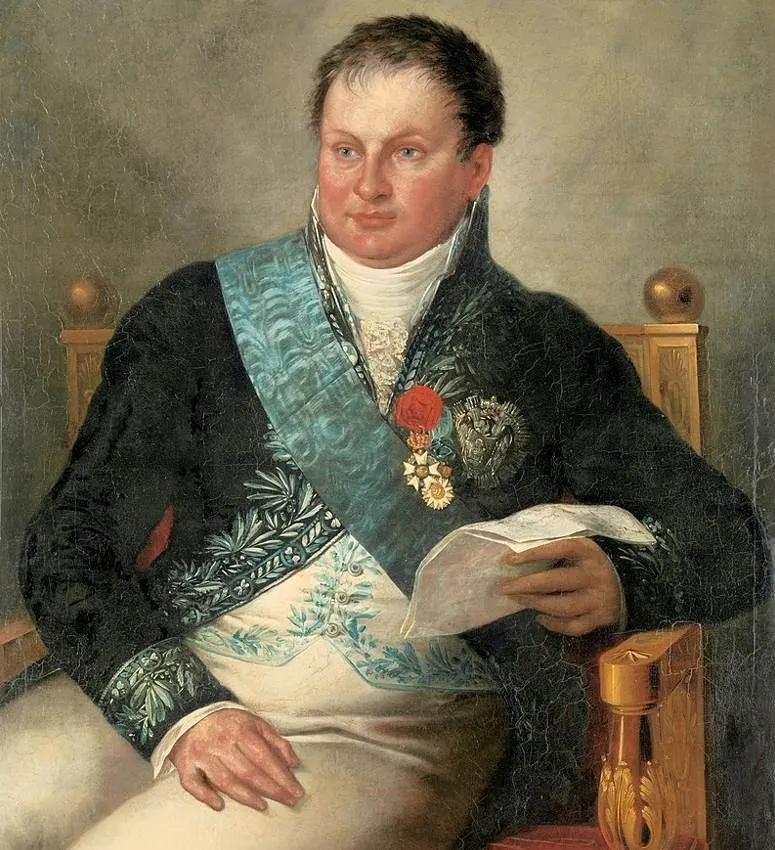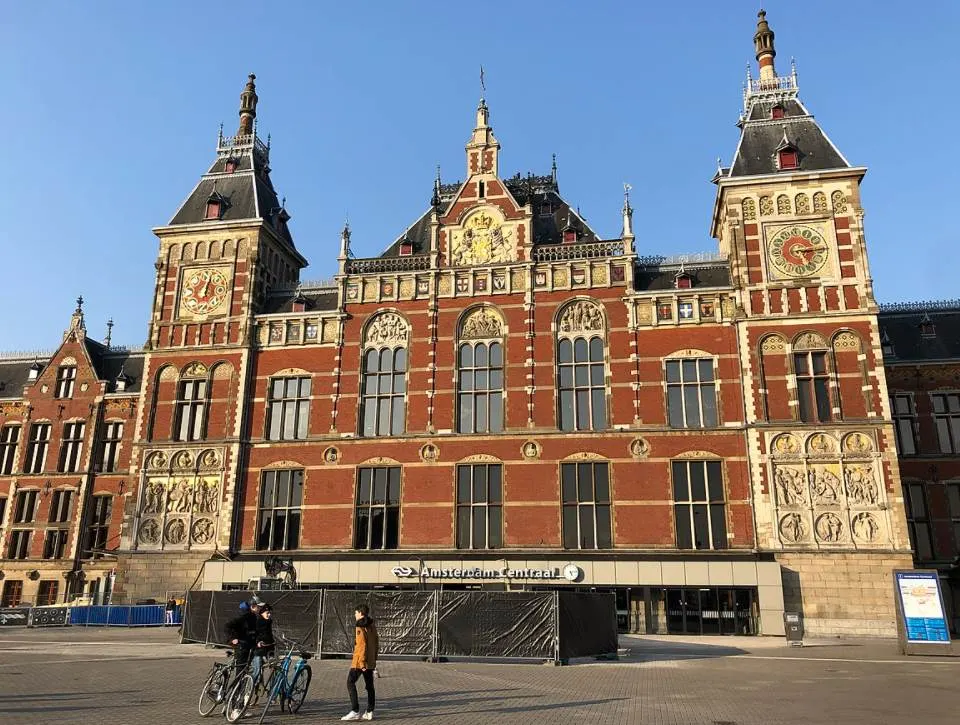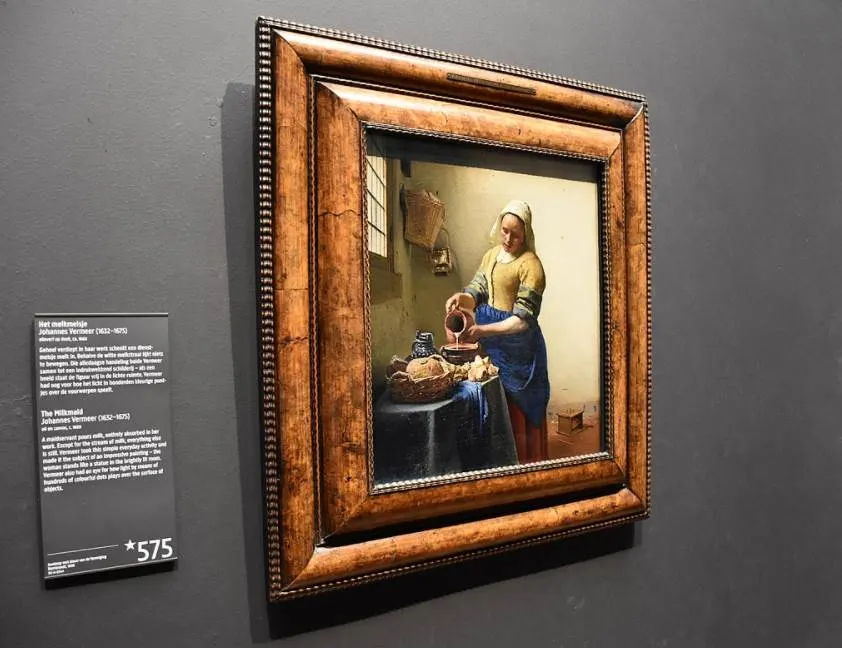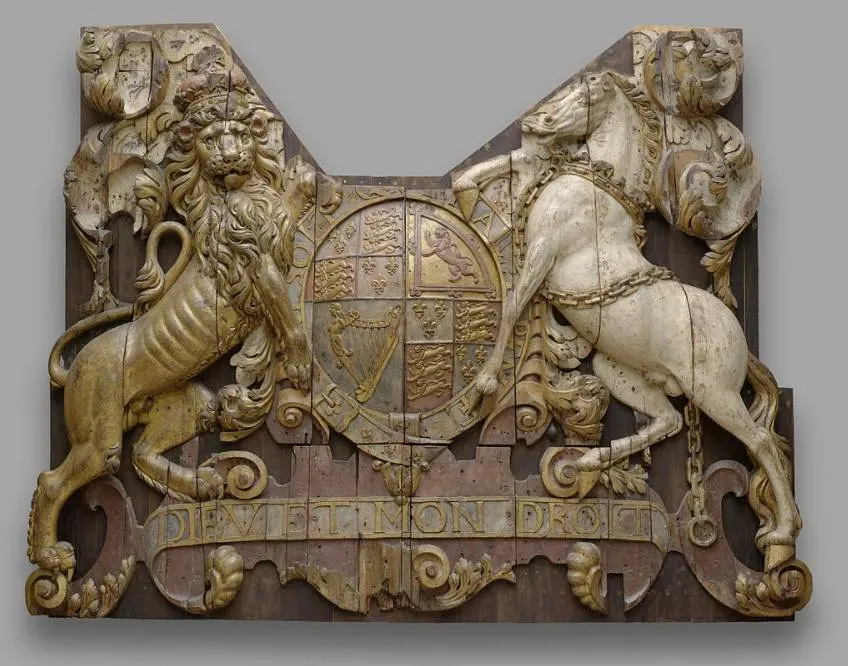What better place to learn about the history of the Netherlands and to enjoy some of the finest artworks created by Dutch artists than the national museum of the country, right?
Let’s take a closer look at some of the most interesting facts about the Rijksmuseum in Amsterdam so you can learn all about this amazing building in Amsterdam that houses an incredible collection of fine art.
1. It’s located at Museum Square in Amsterdam South
When you come across a magnificent building located at Museum Square in Museum Street just south of the historical heart of Amsterdam, you can be sure that it’s home to a magnificent museum.
The Rijksmuseum is not only the largest and most popular art museum in the Netherlands, it’s also the country’s national museum. It features the largest collection of Dutch Golden Age painters and also exhibits some artifacts related to the history of the Netherlands.
This particular district is a popular tourist destination in Amsterdam, especially for art lovers because the national museum isn’t the only place where you can enjoy fine art. Other museums located here include:
- Moco Museum Amsterdam – The Museum of Modern Art.
- The Van Gogh Museum – Focused on the works of Vincent van Gogh.
- The Stedelijk Museum Amsterdam – A museum focused on contemporary art.
All of the museums are located at Museum Square, a scenic park in Amsterdam South and a great place to relax (which is needed if you plan to visit all of the museums).

2. It was established during the Batavian Republic in the late 18th century
The Dutch Republic, also known as the “Republic of the Seven United Netherlands,” was the first Dutch federal republic and existed between 1588 and 1795.
It was during this state that the Dutch Golden Age emerged, also known as the “Dutch Miracle,” a time in which the Netherlands was one of the leading countries in the world in multiple areas, including art.
The successor of this state was the Batavian Republic (1795-1806), the predecessor of the Modern-day Kingdom of Holand. It was at the start of this republic that the need for a national museum was first discussed.

Isaac Gogel, the minister of Finance at the time, based this need on the Louvre Museum in Paris, the most-visited museum in the world today. 3 years later, the Rijksmuseum was founded, an event that took place on November 19, 1798.

3. The Rijksmuseum wasn’t founded in Amsterdam
One of the most remarkable facts about the Rijksmuseum is that it wasn’t founded in Amsterdam but The Hague, the third-largest city in the country today and the administrative and royal capital of the Netherlands.
The first venue of the museum was the “Huis ten Bosch” in The Hague, a royal palace that serves as one of the 3 official residences f the Dutch monarchs today.
Tne beginnings were rather humble since the collection only featured about 200 paintings and historical objects, mostly amassed from the collections of Dutch stadtholders, the predecessors of dukes and counts during the Middle Ages.
The museum didn’t move to Amsterdam during the Batavian Republic but only in the year 1808, 2 years after the kingdom of Holland was established by Napoleon Bonaparte.

4. The museum’s collection moved quite a bit throughout its history
The museum was relocated to the Royal Palace in Amsterdam in the year 1808 on the orders of Louis Bonaparte, the brother of Napoleon Bonaparte and the king of Holland at the time.
The Royal Palace is located right in the center of Amsterdam and is another of the 3 royal palaces that serve as the Dutch monarch’s official residence.
Remarkably, this relocation wasn’t the last time the collection was moved. It was subsequently housed at:
- The Trippenhuis in Amsterdam, a Neoclassical building along the canals in central Amsterdam.
- The Mauritshuis in The Hague, the most famous art museum in the city.
- Paviljoen Welgelegen in Haarlem, the former Summer residence of King Louis Bonaparte.
5. The architect of the building lost the first design competition
The Trippenhuis in Amsterdam was deemed unsuitable for the fast-growing collection and the idea of building a new building came about halfway through the 19th century.
For this purpose, a design competition was established in which Pierre Cuypers (1827-1921), the eventual architect of the building, participated. The design submitted by Cuypers reached second place in this contest but none of the submissions were deemed suitable at that time.
The second competition was held in the year 1876 and this time, Cuypers won and was awarded the contract to build it. He eventually became one of the most renowned architects in Dutch history, also designing the iconic railway station called the Amsterdam Central Station (1881-1889) which bears a lot of similarities with the Rijksmuseum building.

6. The current 19th-century building fetures 2 architectural styles
The winning submission features a remarkable architectural design. It’s a combination of Gothic and Renaissance architectural styles and is adorned with features related to the history of the Netherlands and Dutch art.
The Rijksmuseum building was completed between 1876 and 1885 and first opened its doors on July 13, 1885.

7. A hall for one specific painting was built during the early 20th century
One of the most famous paintings at the Rijksmuseum is also one of the most iconic paintings in Dutch History, “The Night Watch” (1642) by Rembrandt van Rijn.
The museum was expanded in the year 1906 and more specifically, the hall featuring this magnificent work of art which is known as the “Nactwachthal” or “Night Watch Hall.”
Interior renovations were made during the 1920s and 1950s and a serious expansion phase was conducted during the 1960s in which additional exhibition halls were built in the courtyard of the building.

8. A €375 million renovation transformed the museum in the 21st century
The renovation of the “Fragment Wing” or “Philips Wing” during the year 1996 paled in comparison to the extensive renovation that took place in the early 21st century.
This renovation initially started in December 2003 but was delayed multiple times and it wasn’t completed until July 16, 2012. The interior of the museum was completely transformed for €375 million.
The architects of the building were a Spanish architectural firm that has offices in Seville and Amsterdam named “Antonio Cruz and Antonio Ortiz.” They are famously known for designing the Wanda Metropolitano, the football stadium of Atlético Madrid.

9. Only 8,000 items of the 1 million collection are on display
Just like most major museums in the world, the Rijksmuseum doesn’t have its entire collection size on display. In the case of the museum of Amsterdam, only 8,000 items of the 1 million collection size are on display.
This is just 0.8% of the entire collection!
Luckily, these include over 2,000 masterpieces of Dutch Golden Age painters such as Rembrandt van Rijn, Johannes Vermeer, and Frans Hals. The Milkmaid by Vermeer (1658) is arguably one of the best-known works on display apart from Rembrandt’s Night Watch.

10. It has a remarkable item from a 17th-century British ship on display
Apart from Dutch Golden Age paintings and an Asian art collection at the Asian Pavillion, the Rijksmuseum also has artifacts related to Dutch history on display.
One of the most remarkable items is the stern of the HMS Royal Charles, a 17th-century ship from the English Royal Navy. This item was captured by the Dutch following the Raid on the Medway during the Second Anglo-Dutch War in June 1667.

11. It’s one of the most-visited museums in the Netherlands
The Rijksmuseum has been one of the most-visited museums in the Netherlands since its foundation in the early 19th century, and the number f visitors has been steadily growing over the decades. The record of the 20th century was set in 1975 with 1,412,000 visitors that year.
2014 was the record year with 2.47 million visitors, a year in which the museum was the 19th-most visited museum in the world.
Today, it’s still one of the most-visited museums in the country but is often surpassed by the nearby Van Gogh Museum which steadily had over 2 million yearly visitors before the COVID-19 pandemic.
12. The museum features the largest research library in the country
The building not only houses a museum of fine art but also the largest art history research library in the Netherlands. This facility is called the “Rijksmuseum Research Library” and features over 400,000 items. The collection is also steadily growing with about 10,000 books every year.
The online catalog of the museum is called the “Rijksstudio” and aims to offer over 1 million high-resolution creative commons images from the museum’s collection, of which nearly 800,000 were published as of 2021.

